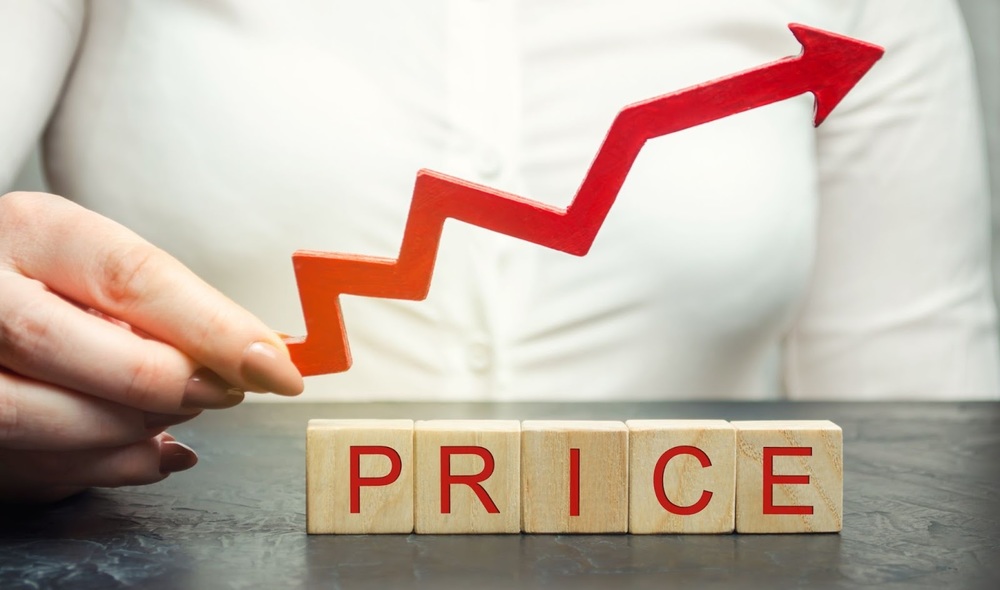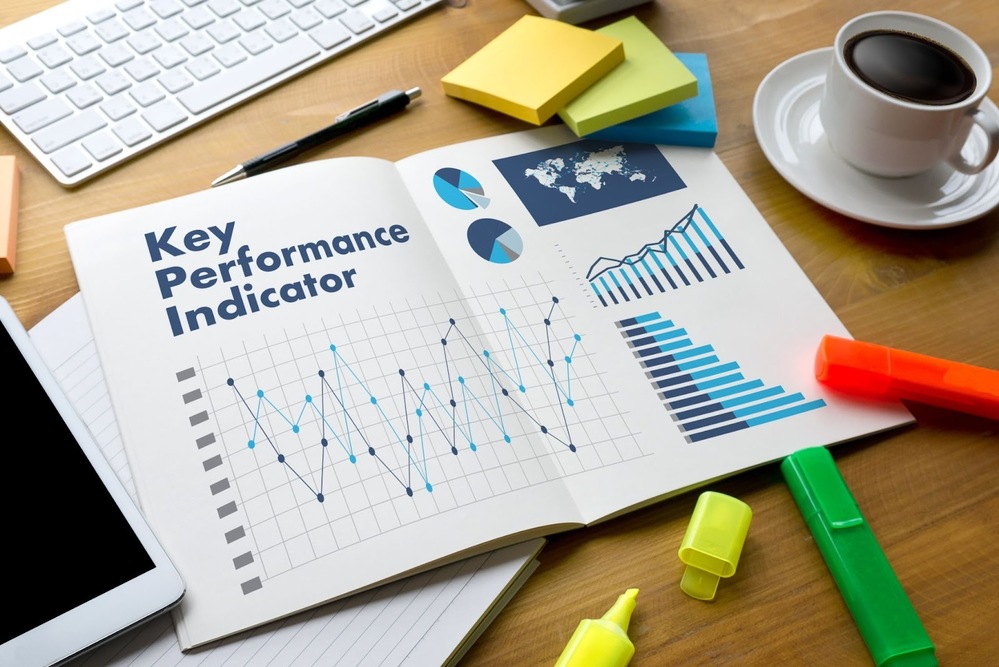Customer Spend Analysis: Definition, Prediction, and Calculate Spend
Share:
Welcome to Thomas Insights — every day, we publish the latest news and analysis to keep our readers up to date on what’s happening in industry. Sign up here to get the day’s top stories delivered straight to your inbox.

Intelligence divisions are no longer reserved for James Bond movies 一 business intelligence has become a massive area of opportunity thanks to all the data collected through company operations, whether that be financial data, procurement data, or other data sources.
Spending data analysis is of particular interest, as procurement professionals and business executives can derive key benefits from understanding how, when, and why customers buy products and services.
Below we will explore how spending analysis and data management can be leveraged for more accurate forecasts and savings opportunities by using mathematical and statistical tools like machine learning, predictive analytics, and much more.
What Is Customer Spend?
Customer spend, also known as customer spending or personal consumption expenditure, is the money spent by customers on goods and services for personal use, entertainment, or otherwise final sales. The spend analysis process investigates this spending behavior and spend data to make key business decisions using purchase data, direct spend analytics, market segmentation, and predictive modeling tools.
Why Track Customer Spend?
When analyzing customer spending, business units discover the boundaries of their target market and can use this information to form actionable insights like dynamically changing price, personalizing the spending process, improving strategic sourcing and spend management, or building any number of optimizations. Although the specific method of spend analytics varies across organizations, we will explore the common methods of prediction and calculation to ultimately increase the amount of money extracted from a customer base.

How to Predict Customer Spend
Prediction is a particularly difficult endeavor ー even with a firm comprehension of the data being used, forecasts rapidly deteriorate in accuracy without frequent updates over time. It is also important to mention the looming shadow of randomness that derails idealized or otherwise fragile models.
The practice of predicting customer spending, therefore, involves machine learning (ML), statistics, and other mathematical tools to increase the certainty of assertions. But remember that these are used to build models that may not necessarily represent spending in reality. Forecasting customer spending is also dependent on the quality of interpretation.
That being said, there are generally two main approaches to predicting customer spend, separated by looking at the individual customer and a group of customers. The first approach is known as predictive modeling, where individual customer data are analyzed using ML-based methodology and other mathematical schemas.
The second is time series analysis, a tool from statistics, where aggregate data from current and historical spending are investigated to tease out patterns. Either of these, or better yet a combination of the two techniques, can lead to insights on potential cost reduction opportunities, procurement process improvement, and enhanced spend visibility.
Predictive Modeling
In predictive modeling, several mathematical tools are implemented to create a model of the future behavior of customers using existing data. One such tool, known as linear regression, is an example of how previous individual customer data can be used to predict future spending. In linear regression modeling, predictions on the value of a desired variable known as the dependent, response, or outcome variable are derived from the value of known variables, or the independent, explanatory, or predictor variables.
Here’s an example: the height of a person (dependent variable) can be predicted to some accuracy by quantifying the relative impacts of age, gender, nutrition, demographics, and other variables (independent variables) on their height.
In the area of spend analytics, regression modeling will accept inputs on the previous spending patterns from a particular customer, along with confounding variables like the time of year, market conditions, or blank data (i.e. when the customer has never made purchases before) to output a prediction of the value of their next spend.
This is easier said than done, and it typically involves complex modeling approaches such as nonlinear regression models, creating several different models, or better fitting the prediction to the specifics of spend behavior over time.
Case Study: Manufacturing
Here’s a common illustration of predictive modeling in manufacturing: a manufacturing company uses five different materials to create a product, and there is a strict quality policy that stipulates a maximum allowable defect rate on this product. This defect rate is affected by the quality of each material, whether that be determined by cleanliness, tolerances, sterility, or other measures. When the company starts to notice an increase in the rate of defects, it must predict which material(s) contribute the most to this rise as they do not have the time nor the capabilities to improve the quality of all five materials.
In this illustration, the company uses linear regression techniques to predict the relative effect on quality for each material (the dependent variables) by quantifying the impacts of production date, batch volume, raw material input, ratio of materials, and other values (the independent variables). Once they predict which material affects quality the most, they can focus their efforts on improving supplier management, the procurement process, or oversight of this material.

Time Series Analysis
Time series analysis tracks changes in data and the dependencies of certain variables over time. Instead of trying to forecast what may happen, time series analysis answers what and why things happened in the past. These analyses tie key metrics to time so that investigators can potentially understand how time affects desired dependent variables. In manufacturing, variables are related to customer spending habits.
In customer spend analysis, time series data on consumer trends, seasonality, cyclicality, and irregularities are revealed retrospectively to get a picture of customer spending over time. This insight can potentially be useful in demand forecasting in the future or as a starting point for predictive modeling.
Models that implement time series data include but are not limited to:
- Categorizing the data (classification)
- Creating a line-of-best fit to see the non-linear relationship between variables (curve fitting)
- Identifying non-quantitative trends about the data like seasonality, cyclicality, etc. (descriptive analysis)
- Understanding potential cause-and-effect relationships in the data (explanatory analysis)
- Exploring the main characteristics and abnormalities of the data (exploratory analysis)
- Looking at events in time in relation to the time series to see its effect (intervention analysis)
- Splitting the data into pieces to better grasp the underlying data (segmentation)
Note that these all involve the use of statistical tools as well as programming languages and spend analysis software built for statistical analysis, such as R, MATLAB, or other languages.
Case Study: Stocks
If you have ever looked at a stock’s performance, then you have already performed a rudimentary time series analysis. The price of a stock at a given point in time is collected as a data point, and these points are recorded over a period of time (year, month, etc.) to output a time series of the stock price over time. From the resulting graph, you can see a decrease in price over time, an increase in dividends, more or less share dilution, and other metrics that may correlate to certain business or market trends.

How to Calculate Customer Spend
There are two key values that can help outline how customers spend money with your business and their typical behavior, which can be useful in future demand forecasting: average spend value (ASV) and average transaction value (ATV).
These values are defined and explored below, but note that each can be determined on several timescales. For example, they can be computed on a weekly, monthly, or annual basis, depending on the need. Here we will stick with an annual timeframe, to keep things simple.
Average Annual Spend Value

The average annual spend value is computed using the following simple calculation:
average annual spend per sale / annual spend frequency =
average annual spend value.
Average Annual Transaction Value
The average annual transaction value is computed using the following simple calculations:
Total annual transaction value / annual number of transactions =
average annual transaction value
While not comprehensive measures, these two calculations are great starting points for determining how much and how often customers spend money with a business on an average basis.

How to Increase Customer Spend
There are methods to increase spending without using forecasting or predictive modeling. Below are some of the most common techniques and tactics:
Increase Prices
Increasing prices will directly increase customer spending, as it means consumers are required to spend more on the product or service they purchase. The issue with this tactic is that, if you increase prices too much, you start to out-price your customers and lose them.
Some businesses use this to their advantage as, for example, luxury brands will increase prices so significantly to where each sale adds more to the total customer spend, despite the lower customer count. Selling 10 handbags at $1,000 is more profitable than selling 90 at $50, assuming overhead costs are comparable.
The best method for implementing this tactic is to determine your desired net profit margin and work backward, keeping the customer in mind so as to make the product or service attainable. If you are selling a good or service for $100 but your profit margins would increase 15% by charging $170, then it may be worth the price increase if customers are willing to pay a bit more.

Upsell and Cross-sell
Born from the sales world, upselling and cross-selling are techniques of selling more premium or additional goods and services with incentives like add-ons, upgrades, subscriptions, premium packages, or other costs.
Think of a visit to a restaurant: waiters will ask not only about main courses but also drinks, appetizers, side dishes, desserts, “chef specials,” and other items that will significantly increase the sale price. Upselling and cross-selling are good ways to both increase sale volume and price per sale, which will both lift your customer spend.
Personalize and Prioritize Customer Experience
Customers will more reliably spend money with a business if they know it is respectful, expedient, and straightforward. Making the customer’s experience of primary concern is key to reducing cyclicality and increasing reliable spending, as customers know what they will get each sale.
Understanding the needs of your customer beyond the simple transaction occurring will make your offerings that much more useful, and therefore desirable. Spending will increase when you tailor your approach not to maximizing profit but to maximizing customer satisfaction. Word-of-mouth advertising is more valuable to a sales endeavor ー and best of all, it’s free.

Key Performance Indicators
KPIs aid in data extraction by distilling key business information into easy-to-understand indicators of company health. KPIs continuously track performance over time in reference to certain goals and milestones with business-specific metrics such as preferred suppliers, procurement costs, contract management and contract terms compliance, and more.
In the context of this article, KPIs help maximize the benefits of spend analysis by showing areas of potential process improvements and revealing avenues to reduce costs. They are typically deployed through procurement software for procurement organizations, but custom dashboards are often built for the need of business systems, customer spending included.
Thomas Insights’ Key Performance Indicators Resources:
- Essential Procurement KPIs You Can't Ignore
- Direct vs. Indirect Spend: A Closer Look at the Key Differences
- What Is Invoice Accuracy?
- Order Cycle Time: Definition, Formula, and Improvement
- What Is Compliance Rate? Definition, Formula, and Examples
- Lead Time: Definition, Examples, and Formula
- What Is an Emergency Purchase Ratio, and Why Is It Important?
Get More Insights on Customer Spending
- How to Improve Customer Acquisition and Retention by Managing Switching Costs
- How Companies Go the Extra Mile to Improve Customer Experience
- H&M, Zara, Fast Fashion Turn to Artificial Intelligence to Transform the Supply Chain
Image Credit: Kmpzzz / Shutterstock.com


